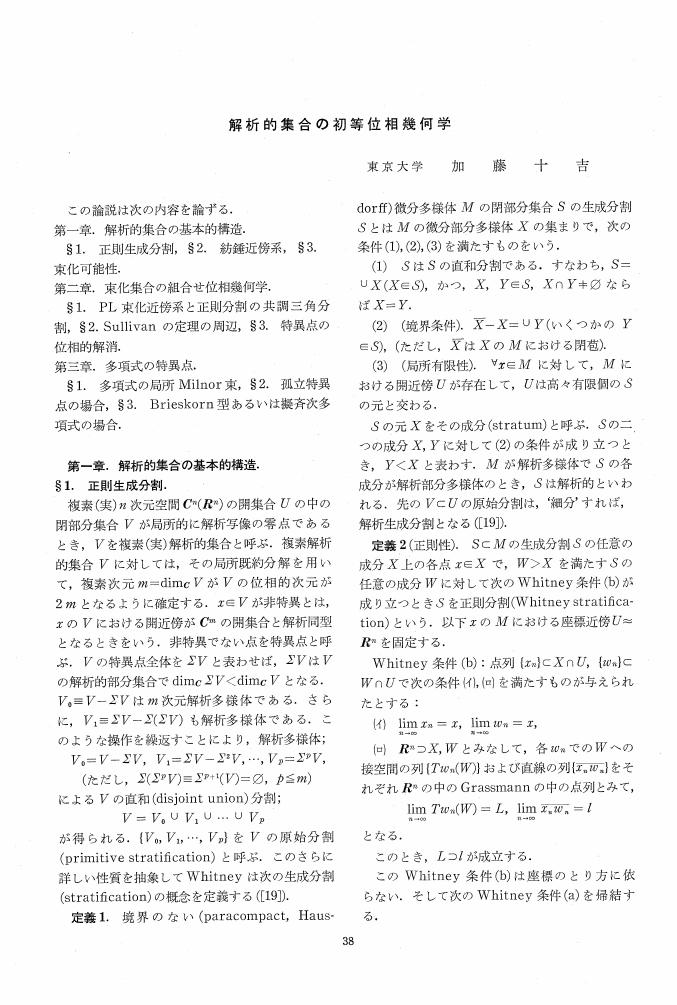1 0 0 0 OA 奈良時代における絹生産の動向
- 著者
- 三木 六男
- 出版者
- 日本シルク学会
- 雑誌
- 日本シルク学会誌 (ISSN:18808204)
- 巻号頁・発行日
- vol.18, pp.83-90, 2010 (Released:2011-03-18)
- 参考文献数
- 33
The results of this study were obtained from an investigation of the archives of silk production in relation to the tax on silk during the Nara period in the 8th century. The silk producing districts ranged from the Kanto region to Shikoku and Kyushu, and there were over 40 silk producing districts in the middle of the 8th century. Three main kinds of silk were produced, namely Ashiginu fabrics, silk fiber and floss silk, and there were 15 districts producing Ashiginu fabrics (42%). The districts producing the largest amount of silk annually were Echu (floss silk), Inaba (Ashiginu fabrics, silk fiber and floss silk) and Iwami (floss silk). The districts that were the largest annual producers of the three different types of silk were Mikawa (Ashiginu fabrics), Inaba (silk fiber) and Echu (floss silk). Mulberries were cultivated in Echu district in 759 A.D. and this was the only example of mulberry field cultivation in the Nara period. Two hamlets in the Echizen district in 740 A.D. were the only locations where sericulture was practiced in the Nara period. These were produced against the tax of silk by Ashiginu fabrics and floss silk. And the weights of these products were 2.4 and 1.8kg, respectively, and the used cocoon weights were 40 and 30 kg, respectively, from a trial calculation for harvesting cocoons. Moreover, the total harvesting cocoon were about 80 and 90 kg by addition to Ashiginu fabrics. (E mail: mutsuo_miki@yahoo.co.jp)
1 0 0 0 OA 歓迎汪精衛閣下
- 著者
- 内閣総理大臣公爵 近衛文麿
- 出版者
- コロムビア(NHK)
1 0 0 0 OA 満州ピジン中国語と協和語
- 著者
- 島薗 進
- 出版者
- メディカル・サイエンス・インターナショナル
- 巻号頁・発行日
- pp.484-485, 2020-07-01
■日本の脳死をめぐる議論—二元論批判広く東アジアにおける脳死臓器移植が進まない理由を考える前に,日本における1980〜2000年代にかけての脳死をめぐる議論について述べる。 日本では1980年代以降,脳死認定に基づく臓器移植について活発な論議が行われ,90年にいわゆる「脳死臨調」(臨時脳死及び臓器移植調査会)が設置され,国民的議論といってよいほどに関心を集めた。審議の結果は92年に「脳死及び臓器移植に関する重要事項について(答申)」にまとめられ,その答申に沿って97年に「臓器の移植に関する法律」が成立した。
1 0 0 0 OA 日本関係情報(短信)
- 出版者
- 国立国会図書館
- 雑誌
- 外国の立法 : 立法情報・翻訳・解説 (ISSN:13492071)
- 巻号頁・発行日
- vol.(月刊版. 284-2), 2020-08
1 0 0 0 OA アメリカ ジェームズ・アンダーソン氏の国防副次官への指名承認公聴会
- 著者
- 西住祐亮
- 出版者
- 国立国会図書館
- 雑誌
- 外国の立法 : 立法情報・翻訳・解説 (ISSN:13492071)
- 巻号頁・発行日
- vol.(月刊版. 284-2), 2020-08
1 0 0 0 OA シンガポール アクティブ・モビリティ法の改正
- 著者
- 日野智豪
- 出版者
- 国立国会図書館
- 雑誌
- 外国の立法 : 立法情報・翻訳・解説 (ISSN:13492071)
- 巻号頁・発行日
- vol.(月刊版. 284-2), 2020-08
1 0 0 0 OA 中国 固体廃棄物環境汚染防止法の改正
- 著者
- 湯野基生
- 出版者
- 国立国会図書館
- 雑誌
- 外国の立法 : 立法情報・翻訳・解説 (ISSN:13492071)
- 巻号頁・発行日
- vol.(月刊版. 284-2), 2020-08
1 0 0 0 OA 韓国 医療機器産業の育成に関する法律の制定
- 著者
- 中村穂佳
- 出版者
- 国立国会図書館
- 雑誌
- 外国の立法 : 立法情報・翻訳・解説 (ISSN:13492071)
- 巻号頁・発行日
- vol.(月刊版. 284-2), 2020-08
1 0 0 0 OA 韓国 在サハリン韓国人の支援に関する法律の制定
- 著者
- 中村穂佳
- 出版者
- 国立国会図書館
- 雑誌
- 外国の立法 : 立法情報・翻訳・解説 (ISSN:13492071)
- 巻号頁・発行日
- vol.(月刊版. 284-2), 2020-08
1 0 0 0 OA 解析的集合の初等位相幾何学
- 著者
- 加藤 十吉
- 出版者
- 一般社団法人 日本数学会
- 雑誌
- 数学 (ISSN:0039470X)
- 巻号頁・発行日
- vol.25, no.1, pp.38-51, 1973-01-30 (Released:2008-12-25)
- 参考文献数
- 23
- 著者
- Yusuke KITAMURA Kotaro MISHIO Pelin ARSLAN Boui IKEDA Chiharu IMOTO Yousuke KATSUDA Toshihiro IHARA
- 出版者
- The Japan Society for Analytical Chemistry
- 雑誌
- Analytical Sciences (ISSN:09106340)
- 巻号頁・発行日
- vol.36, no.8, pp.959-964, 2020-08-10 (Released:2020-08-10)
- 参考文献数
- 12
- 被引用文献数
- 6
Ferrocene (Fc) and β-cyclodextrin (βCyD) were modified at each end of stem-loop structured DNA as an electrochemical signal generator and its quencher, respectively, to give an electrochemical molecular beacon (eMB). A relatively high efficiency of signal quenching was achieved by an inclusion complex (βCyD ⊃ Fc) formation that was induced on the stem structure of the closed form (= stem-loop structure) of eMB. With the addition of target DNA, the structure of eMB opened to form a linear duplex, where the Fc dissociated from the βCyD to restore its intrinsic electrochemical signal. The signal contrast of the electric current for this off/on-type sensor was high, ca. 95. This technique did not require any modification of the electrode surface, and it realized the detection of the target nucleic acids in a homogeneous solution with a high sensitivity using high-performance liquid chromatography (HPLC) equipped with electrochemical detector.
- 著者
- Hiroka SUGAI Shunsuke TOMITA Ryoji KURITA
- 出版者
- The Japan Society for Analytical Chemistry
- 雑誌
- Analytical Sciences (ISSN:09106340)
- 巻号頁・発行日
- vol.36, no.8, pp.923-934, 2020-08-10 (Released:2020-08-10)
- 参考文献数
- 105
- 被引用文献数
- 13
To capture a broader scope of complex biological phenomena, alternatives to conventional sensing based on specificity for cell detection and characterization are needed. Pattern-recognition-based sensing is an analytical method designed to mimic mammalian sensory systems for analyte identification based on the pattern recognition of multivariate data, which are generated using an array of multiple probes that cross-reactively interact with analytes. This sensing approach is significantly different from conventional specific cell sensing based on highly specific probes, including antibodies against biomarkers. Encouraged by the advantages of this technique, such as the simplicity, rapidity, and tunability of the systems without requiring a priori knowledge of biomarkers, numerous sensor arrays have been developed over the past decade and used in a variety of cell sensing applications; these include disease diagnosis, drug discovery, and fundamental research. This review summarizes recent progress in pattern-recognition-based cell sensing, with a particular focus on guidelines for designing materials and arrays, techniques for analyzing response patterns, and applications of sensor systems that are focused primarily for the biomedical field.
1 0 0 0 世界のネコたち
- 著者
- 山崎哲写真 グロリア・スティーブンス解説 [手塚勲訳]
- 出版者
- 山と渓谷社
- 巻号頁・発行日
- 2000
1 0 0 0 新猫種大図鑑
- 著者
- ブルース・フォーグル著
- 出版者
- 緑書房 (発売)
- 巻号頁・発行日
- 2004
1 0 0 0 世界の猫カタログ : Cat catalogue best 43
1 0 0 0 OA 前田豊子 (2012) 『言語と時間 ギヨーム言語論におけるtemps』あるむ
- 著者
- 川島 浩一郎
- 出版者
- 日本フランス語学会
- 雑誌
- フランス語学研究 (ISSN:02868601)
- 巻号頁・発行日
- vol.48, no.1, pp.94-96, 2014-06-01 (Released:2017-09-09)
1 0 0 0 OA 松平定信による盛岡藩領内の古鎧調査
- 著者
- 齋藤里香
- 出版者
- 岩手県
- 雑誌
- 岩手県立博物館研究報告
- 巻号頁・発行日
- no.29, 2012-03
1 0 0 0 IR 講義ノート:容貌の障害 : 障害福祉の視点から
- 著者
- 杉野 昭博
- 出版者
- 首都大学東京社会福祉学研究科
- 雑誌
- 人文学報, 社会福祉学 (ISSN:03868729)
- 巻号頁・発行日
- no.35, pp.149-163, 2019-03
資料
1 0 0 0 超一流サッカー選手の脳活動の特殊性
- 著者
- 内藤 栄一
- 出版者
- 公益社団法人 計測自動制御学会
- 雑誌
- 計測と制御 (ISSN:04534662)
- 巻号頁・発行日
- vol.56, no.8, pp.588-594, 2017






